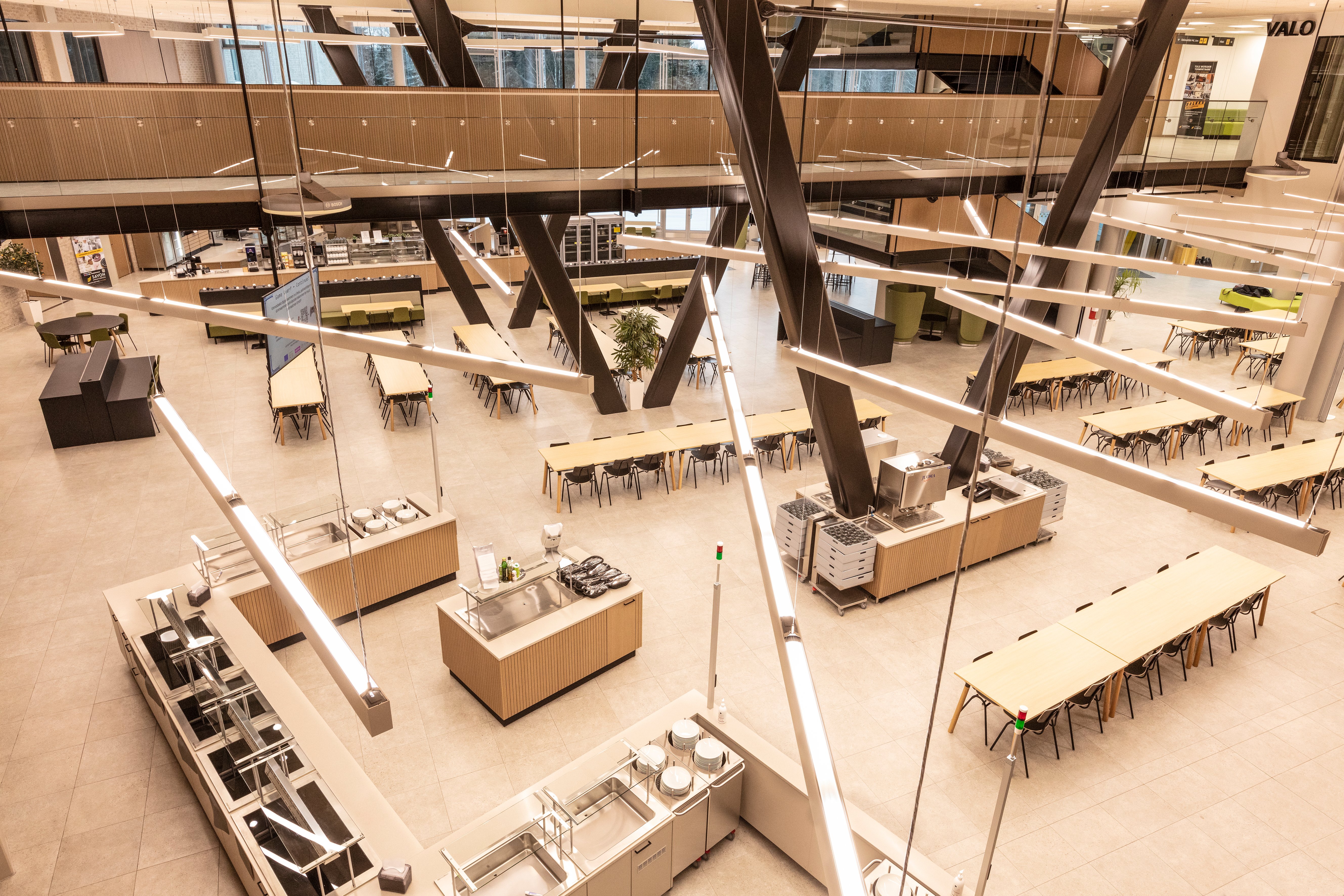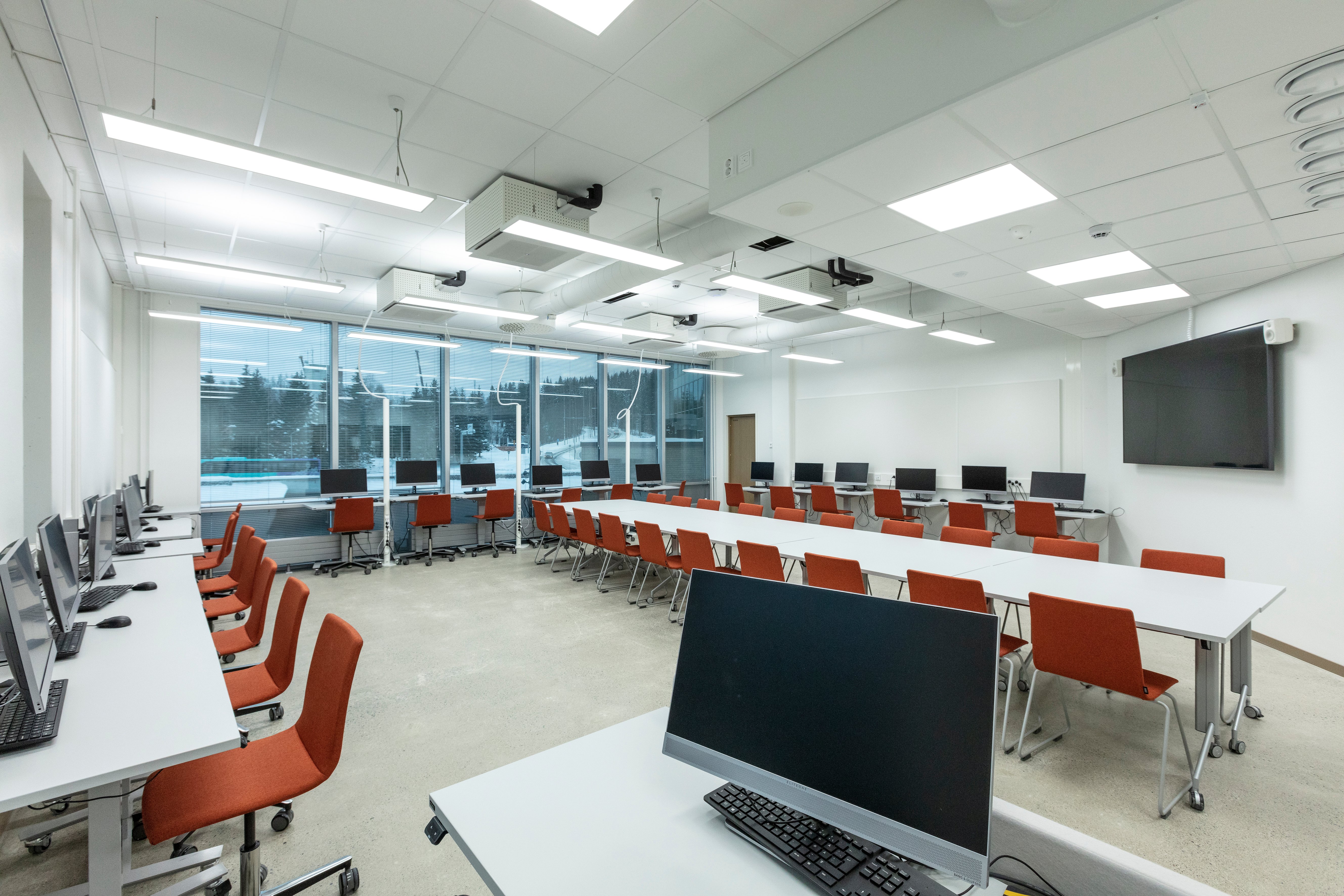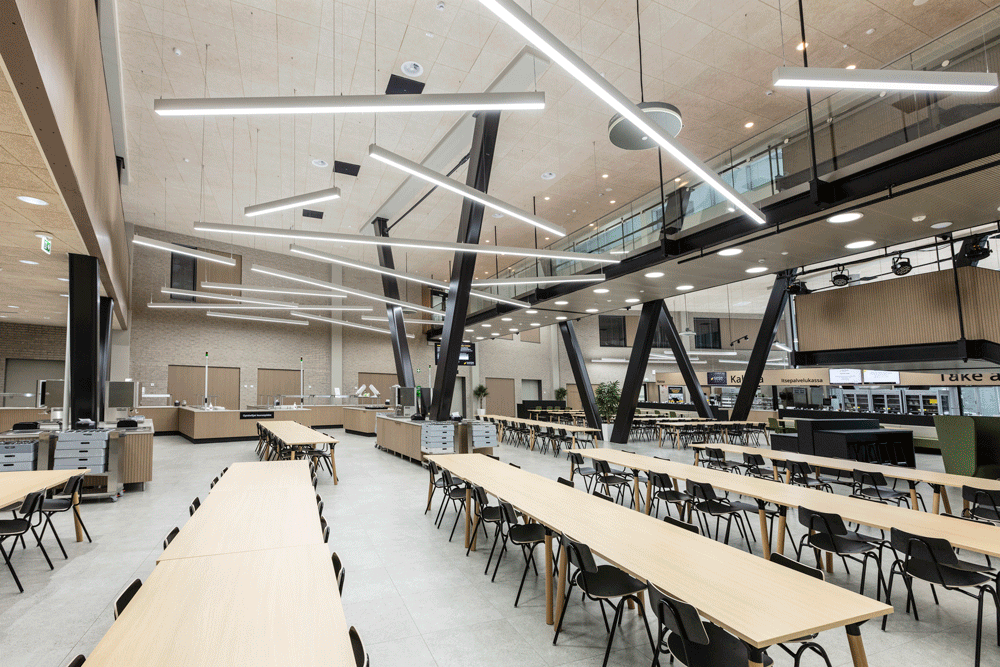The new Savilahti campus in Kuopio provides a modern learning environment for the 3,500 students at the Savo Vocational College. Human centric lighting helps to create comfortable and healthy spaces where learning is supported by lighting.
THE CAMPUS CONSISTS OF THREE CONNECTED NEW BUILDS (called “Power”, “Electricity” and “Light”), which house various classrooms, including an electrical laboratory, hairdressing company, vehicle paint shop and training kitchen. A total of 3,500 students and 450 employees work over a total area of 26,000 m2.
Great importance was placed on the quality and design of the lighting on the campus. All teaching and working spaces, halls and corridors are equipped with human centric lighting.

“We wanted to create a healthy and high-quality environment for students and staff, including with respect to lighting. For humans, light is the most important factor for maintaining the day-night rhythm. Interior lighting supports this natural rhythm,” said Timo Kauppinen, electrical engineer at Savo’s inter-municipal education association.
A characteristic feature of human centric lighting (HCL) is that the colour temperature and intensity of the lighting vary throughout the day. Only the amount of light required to lower the melatonin level and regulate the internal clock is emitted in an energy-efficient manner. At the same time, cortisone and serotonin levels increase in the body. The timing of the light and the correct light quantity to help improve the well-being, sleep quality and performance of the students are crucial here.
Natural daylight also plays an important role on campus. The high glass façades and wall glazing inside the building allow daylight to enter the interior.

Warm or cold light depending on activity
Savo’s inter-municipal education association pursued a sustainable development strategy in the planning and construction of the campus spaces.
“The focus areas for the lighting as part of the sustainable development approach have been the luminaire life cycle, the long service life of the light sources and the control of the lighting. With modern LED luminaires and DALI control, the lighting can be implemented extremely energy-efficiently and economically,” noted Kauppinen.
The light intensity in the communal areas is usually set to 80 percent of the capacity. However, during the current power saving period, the capacity has been reduced to 50 percent.

“The room lighting is controlled via the KNX bus of building automation system based on the measurement data from the motion sensors. The colour temperature and light intensity of human centric lighting are controlled according to Glamox’ recommendations,” said Pekka Ullgren, project manager at Sweco Finland Oy.
Teaching staff can change the lighting presets as needed, selecting strong and cool bright white light to boost concentration during examinations, for example. On the other hand, dimmed, warm lighting can be set to aid relaxation during rest periods and group discussions.
“Learning areas need to remain flexible. The balanced room lighting enables the facilities to be set up efficiently. The layout of the module lighting matches the ceiling grid, which means that the lighting can be moved if necessary,” says Kauppinen.
,(0.5,0.411007,1,0.7142857)&format=jpg)